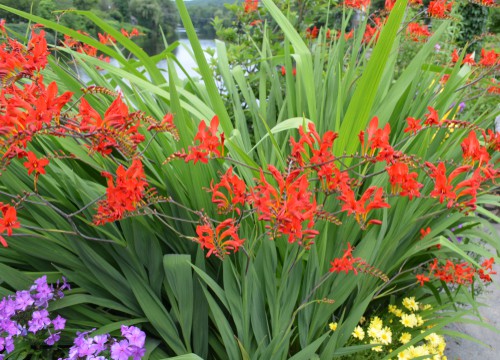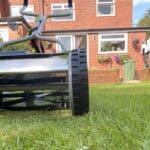Last updated on May 5th, 2022
Our site is reader supported, this means we may earn a small commission from Amazon and other affiliates when you buy through links on our site.
Crocosmias propagate themselves quite well, and they in fact flower much better when crowded together so don’t be hasty and divide too soon. When left to their own devices, they will propagate so quickly that they congest your garden but they usually don’t rush to propagate straight away.
Now, this level of compacted plants will eventually inhibit air flow and sunlight which will hamper the overall health of the plants and, at its worst, reduce flowering. We recommend dividing Crocosmia every 3 years because this usually works well for keeping them a little crowded but dividing them often enough that you really get the most out of them.
Learn more about dividing perennials in this guide
When should you divide Crocosmia?
Divide in the spring if possible
If you want to improve the flowering and overall health of your plants, you should divide your Crocosmia every 3 to 4 years. You can split and divide them in the spring, right before any new growth appears. However, wait until the threat of the last frost has passed, light frost won’t do any harm but a hard first could set them back a little.
You can also divide them in the autumn
Alternatively, if you didn’t have a chance to divide them in spring, you can divide them in the autumn after the foliage has died back and turned entirely brown, usually between September and November.
Note: When you divide and replant, the new divisions may not flower for the first year. We think it’s something to be aware of before you divide your Crocosmia so that you’re not disappointed. However, within 2 years you should be able to enjoy a litany of new flowers that Crocosmia is so well known for.

How to divide Crocosmia
Dig around the clump
Start by digging up your Crocosmia clump. This is best done with garden spades because the clumps can get fairly large. Use the spade to cut a circle in the soil about 30cm away from the plant, all the way around. This will help you dig in at an angle and remove the clump with the least amount of damage to the roots or corms.
Remove the clump carefully
Lift the clump out of the ground carefully and shake away any excess soil. You can rinse away the soil if you prefer, this is usually not needed but it certainly is an option. This just clears away the soil so that you can clearly see the roots and the corms.
Divide the clumps into several pieces that have multiple corms
Pull the corms apart individually or use a sharp knife to cut the clump into smaller sections with multiple corms within each section. Remove any that shows signs of disease or looks unhealthy. You only want undamaged corms because damaged corms can leave plants susceptible to diseases.
Replant divided clumps
When replanting the divisions, place them 9-15cm deep and about 12cm apart. Add bulb fertiliser to the soil when planting to help them establish themselves in their new location. Water thoroughly once in the new location.
You can add a few centimetres of mulch to help with moisture retention and water weekly while the divisions get established.
For dramatic displays, plant 10-15 at a time in the same area.



2 Comments
Thank you, I found the advice most helpful. I am trying to re-populate a dryish unloved area of the garden and a friend has given me some crocosmia Lucifer to get me started. I think I have followed the planting advice but at this time of year should I remove the leaves as they are starting to turn brown and I don’t want to lose the plant.
Hi Caroline, I would leave the brown leaves in for now and cut them back in Autumn.